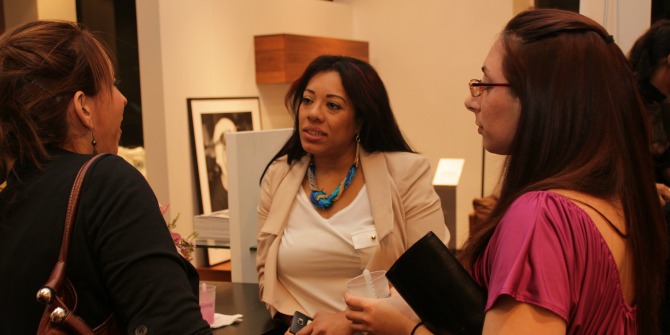Sitting at a focal point between east and west, Singapore has a nuanced and multi-layered cultural landscape that exemplify the importance of context for behavioural interventions to promote diversity and inclusion (D&I). In the case of globally active multinationals, it matters whether the leadership team includes a sufficiently diverse set of experiences including those gained outside of western capitals. Grace Lordan and Lutfey Siddiqi did structured interviews with thirty-five professionals who have senior management oversight for operations in financial services in Singapore and drew three major insights to guide corporations in their D&I initiatives.
What insights does Singapore offer when it comes to workplace inclusion in financial services?
We approached this question with two basic assumptions in our new study:
- First, genuine diversity and inclusion (D&I) are desirable and valuable. The benefits range from better scouting of opportunities through catalysing innovation to more comprehensive scanning for risk. However, realising those benefits is non-trivial. D&I initiatives require deliberate, intentional investment of resources. And, if not done correctly, those initiatives could backfire and become self-defeating.
- Second, context matters. Whether a set of factors and initiatives result in inclusive outcomes or not depend on the commingling and interactions between them. Small changes in context can result in drastically different reactions and outcomes even if the basic ingredients are constant.
Singapore offers a unique context: a global and regional financial hub that attracts expatriate professionals alongside a multi-cultural, multi-ethnic host population.
We built our report on the basis of two foundations. The first is a set of structured interviews with thirty-five professionals who have senior management oversight for operations in Singapore. The second is a body of insights from behavioural studies in academia. This also incorporates prior work done by the LSE Inclusion Initiative (TII) in London on how working from home impacts workplace inclusion, and how inclusion can be enhanced for women in particular.
While the report provides a nine-point framework conveniently represented by the acronym INCLUSION, our findings may be grouped into three major categories:
The pivotal role of leadership in a cross-cultural setting
Inclusiveness as a style and form of leadership has to be deliberately honed. Leaders who may have been promoted on the basis of their core technical expertise would benefit from training in inclusive practices. This is especially important when the team is culturally, cognitively, and linguistically diverse.
“We have policies and guidance on how to get people into the room. However, once in the room, we don’t know how to ensure that people are heard. If there isn’t an environment of trust, people wouldn’t express themselves authentically whether they are asked to speak first or last”.
This quote from one of the executives that we spoke to highlights the role of leaders as tone-setters and climate-setters who give permission or otherwise to diverse voices.
Perhaps more so than any other financial centre, Singapore sits at the nexus of East and West. It is a regional hub for Asia-Pacific and a gateway into (and sometimes interlocuter for) Southeast Asia. The cultural dimension is multi-layered. To paraphrase one of our interviewees, “Silence means different things in different cultures. Some avoid overt conflict. What is unsaid or unheard can be very important”.
In this context, meetings that require material decisions around risk and revenue need to be specially prepared for, to avoid blind-spots. The onus is on the chair to allow for a diversity of ways in which colleagues can contribute views. As a female executive commented, “As the only woman at the meeting, if I know that the others have already reached consensus, it’s easier for me to hold back my views”.
The chair must also pay attention to ‘communication illusion’ when a team discusses amicably together but each persons’ takeaway is different. Misunderstandings need to be anticipated and foundational assumptions such as ‘what good looks like’ need to be over-communicated. Little things such as voicing their opinions after everyone else or ensuring that conversations do not cascade into groupthink can have outsized impact.
We note that context matters for behavioural interventions not just for the targets of intervention, but also for those designing intervention policies. In globally active multinationals, it matters whether the leadership team includes a sufficiently diverse set of experiences including those gained outside of western capitals.
The need to design deliberate processes to counter known biases
A hallmark of behavioural science is the identification and labelling of biases that we are prone to, in different situations. The process of hiring, appraising and promoting staff can display symptoms of some known biases. It is prudent to pre-design processes to subvert the effect of those.
Ideally, firms should hire only on the basis of skills, ability and talent. However, some rely on signals and proxies that they incorrectly perceive to be correlated with these attributes, to the exclusion of more deserving candidates. Confirmation bias is the tendency to seek out evidence that confirms our gut instincts on who is right for the role. Those instincts are in turn driven by what “type” of person has historically held that role. A whole host of other biases – many of which are listed in this glossary compiled for hybrid working situations – can conspire against inclusive outcomes. As one of our interviewees observed, “I don’t know why or how but we all end up being similar type of people in our industry”.
Solutions may be found in hiring from outside familiar networks and making the recruitment criteria more task-based rather than credential-based.
When it comes to progression and promotions, it is important to ensure that everyone has equal access to opportunities. The biases of familiarity that pull towards ‘someone like me’ can be strong. And it might simply be tempting for the unguarded manager to give the promotion to the last person who asked for it! We recommend that leaders are trained for and encouraged to periodically audit how they distribute opportunities. This could be in conjunction with 360-degree feedback. Behavioural science suggests that empowering and trusting the manager to self-correct can become self-fulfilling.
Incentives must also be designed to credibly affirm inclusion practices. Compensation and reward structures that over-emphasise individual performance over teamwork or collaboration can easily overturn all other efforts at enhancing inclusion. There’s a perception that not enough decision-makers at the core of the business – as opposed to HR – have skin in the game.
An inclusive approach to inclusion that fosters ownership and engagement
Ironically, well-meaning diversity and inclusion (D&I) initiatives can generate apathy or even cynicism. This could happen if uniform policies are rolled out from western headquarters (“not invented here”) without allowance for local nuances. It could also happen if there is a lack of honest and comprehensive debate about both the benefits and costs of pursuing inclusion. Treating inclusion as a compliance issue (as opposed to a business, cultural or values-related issue) creates eye-rolling and foot-dragging.
Diversity and inclusion is not cost-free. In fact, simply assembling a superficially diverse team without consciously pursuing inclusion habits can have detrimental effects.
Inclusion can also appear to slow things down, at least in the near-term. For example, ensuring a diverse slate of candidates for a new hire or having a decision scrutinised from an expanded set of perspectives could come with commercial trade-offs.
It is important that leaders consistently and unambiguously acknowledge trade-offs where they exist and affirm a clear preference especially in those situations.
Several respondents have expressed concerns about perceptions of tokenism, insincere virtue-signalling, or compromises in quality for the sake of visual diversity. Leaders must engage with D&I initiatives authentically and address these concerns head-on.
They could do this effectively by linking inclusion to their corporate vision and purpose and making salient their impact on society at large. They could also invest in gathering data and engage in storytelling about specific instances where inclusion has resulted in better solutions, better well-being and better outcome for clients. Crucially, they could garner buy-in by allowing local staff to co-create solutions that work in their contexts. In fact, if done correctly, D&I could be a major anchor and enabler of employee engagement.
A positive bandwagon in the pursuit of inclusion is now in train across global financial services. This is complemented by a greater consideration of environmental, social and governance (ESG) factors in overall decision-making. For this to gain momentum and durability, corporate cultures should foster a journey of enquiry, experimentation and effectiveness-testing. In the course of that journey, Singapore’s unique context will continue to generate insights for organisations and financial centres around the world.
♣♣♣
Notes:
- This blog post is based on Inclusion in Singapore: Introducing The INCLUSION Framework, a tool to create inclusive cultures when managing global teams in financial services, LSE’s The Inclusion Initiative.
- The post represents the views of the author(s), not the position of LSE Business Review or the London School of Economics.
- Featured image by Swapnil Bapat on Unsplash
- When you leave a comment, you’re agreeing to our Comment Policy.





